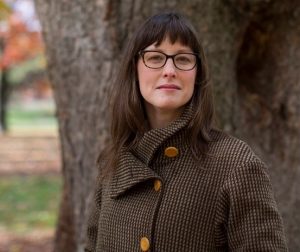How Healthy is Your Office Building?
September 21/2020
U of T Researchers Produce Guidelines For Working Amid Pandemic
As restrictions ease and more workplaces re-open, employers must consider not just the health of staff and the workplace, but of the building itself. That’s according to U of T researchers who have co-created Canada’s first comprehensive report on workplace reopening safety.
As more workers return to office buildings, Canadian employers and building owners lack a solid set of guidelines to help them address COVID safety, says Prof. Victoria Arrandale, an occupational health expert at the Dalla Lana School of Public Health and lead author of the report. But equally important, she says, are other health concerns around safely reopening buildings that have lain dormant for several months.

Prof. Victoria Arrandale ( Photo by Philip Cheung )
To address these issues and produce the guidelines, Arrandale worked with DLSPH Prof. James Scott, Associate Dean France Gagnon, DLSPH occupational and environmental health students, colleagues including Prof. Ramin Farnood (Vice-Dean of Research at U of T’s Faculty of Engineering) and the Canadian Standards Association.
“We don’t want to focus on COVID to the exclusion of other hazards that may be present,” says Arrandale. “We want to think of the workplace as a whole.”
A resurgence of Legionnaire’s Disease?
A major worry is Legionnaire’s Disease in commercial buildings, which could occur if the legionella bacteria build up in dormant water systems, says Prof. James Scott, head of DLSPH’s Occupational and Environmental Health Division.
“I think the probability is high to very high that we’re going to start seeing this as a problem,” he says. “And it’s going to wreak havoc because the initial symptoms are similar to COVID. The medical community for the next six months needs to have an elevated index of suspicion around patients who present with pneumonia-like symptoms to rule out Legionnaire’s.”
Legionnaire’s Disease can be a problem in spas and buildings with rooftop water heaters, but it also cropped up a few years ago in Ontario nursing homes that installed safety devices in their water systems to prevent scalding, says Scott. In these systems, sterilized hot water is tempered with cold water straight from the municipal water system before it travels to the faucet. Normally, this practice is safe when water is flowing regularly, but if this water is allowed to stagnate in pipes, it accumulates microbes and invertebrates that can cause growth of the legionella bacteria.

Prof. James Scott
All public buildings, nursing homes and many private commercial buildings have legionella management programs, says Scott. He worries about those that don’t.
“This disease kills people. It’s not communicable person to person, but you can get it from using the water to drink or wash your hands.”
The interdisciplinary group included information on legionella testing and treatment in their guidelines, released Sept. 21 by CSA. But it also examines how to organize Canadian workplaces to make them safer for people breathing the same air eight hours a day, or more.
“We looked at how to operate a building and organize workspaces when the virus is circulating – increasing the exchange rate, opening windows if possible, supporting physical distancing and using protective equipment,” says Arrandale.
Indoor work spaces are a key area of concern, says Scott. “The uncomfortable thing we’re starting to see is that there are cases emerging – many — that can only have been transmitted from longer than six feet. In these situations, social distancing combined with non-medical masks may provide insufficient protection without enhancements to building ventilation.”
Buildings vary so much country by country, based on differing climates, laws and construction practices, says Scott, that it’s important Canada has its own report on workplace safety in the COVID era.
“We really do need domestic guidelines on this,” he says. “We may have options and opportunities not available anywhere else. Hopefully this report will provide one stop shop for relatively high level guidance based on the things we know.”
The CSA Group’s President and CEO, David Weinstein, echoes his sentiment: “We hope this report, based on current evidence and a literature review, will support businesses and institutions to reopen safely during the COVID-19 pandemic,” he says. “Bringing together 70 volunteers from organizations across Canada, the research paper combines current recommendations and statistics (Part A) with an informative guide (Part B).”